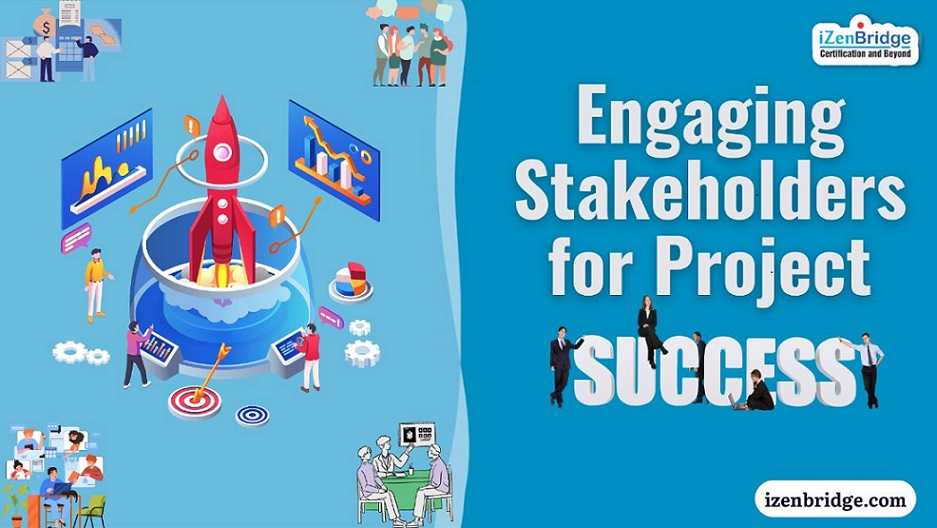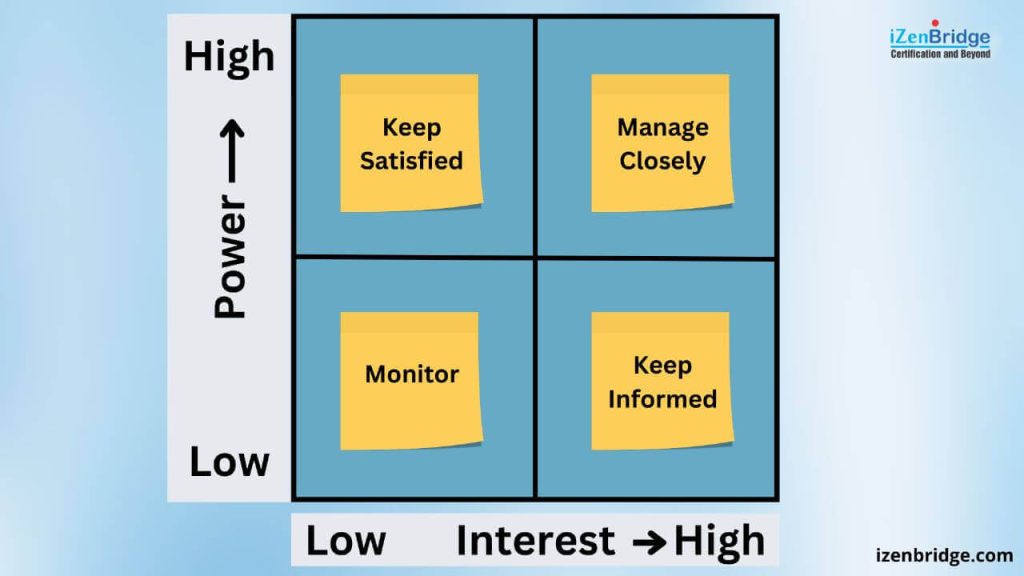

In this Article
Project management can be a complex task. Managing resources, ensuring project completion within set timelines, and meeting the set objectives require a significant level of expertise and precision. To successfully navigate through the course of a project, it is important to understand who are the stakeholders and their role in the project. In essence, stakeholders are those individuals or entities that are interested, or perceived to be interested or impacted by the project.
The stakeholders’ journey begins at the inception of the project. Those who come up with the business idea or identify a need or opportunity are some of the initial stakeholders. They see this need or opportunity convert into profitable numbers, triggering the project’s initiation. Hence, people involved at this stage, such as those funding the project or evaluating the effectiveness of the business case, are crucial stakeholders.
The project initiation can also take an external route. If the project is contracted, the client becomes a key stakeholder, along with the sales team that negotiates the deal and finalizes the payment terms. These individuals have a vested interest in the project and its outcome.
Furthermore, the existence of a project implies an underlying reason owned by certain people willing to invest their money. These stakeholders are interested in knowing how their investment is being utilized and the benefits they can expect. Therefore, understanding their expectations is crucial for the success of the project.
Once the project is launched, internal stakeholders come into play. This includes the team members, vendors, and various other organizational groups like human resources, procurement, legal, and quality assurance. All of these individuals and groups are interested in ensuring project compliance. For instance, the legal group ensures no laws are broken, while human resources provide the right people at the right time, and look after their growth and wellbeing.
The project’s impact reaches beyond its direct boundaries. As the deliverables go to the market, the community and the end-users also become stakeholders. They have a vested interest in the project’s outcome. Similarly, governmental agencies and regulators may be impacted by the deliverables and may want to monitor the project’s progress. Even the vendors, who might make money from the project, are interested in its success, as their profitability could be affected by any disruption.
In project management, managing stakeholders can be a task as challenging as handling multiple line items. Categorization aids in managing the stakeholders better, identifying the people who can effectively handle each category, and thus making the management process manageable.
The stakeholder’s interest, knowledge, ownership, and contribution to the project are key aspects to consider while categorizing and prioritizing. For instance, the end users of a product under development might not be interested in the product until it becomes available to them. In such cases, stakeholders who provide insights into customer behavior can be crucial.
To achieve this, we need to understand the stakeholder’s level of interest and power in the project. A simple and effective tool for this purpose is the Power-Interest grid, which categorizes stakeholders based on their power and interest into a two by two matrix.
The grid has four quadrants: high power-high interest, high power-low interest, low power-low interest, and high interest-low power.

It’s important to remember that these positions are not permanent. A stakeholder might move from one quadrant to another depending on various factors like the project phase or changes in their responsibilities. For instance, a plant manager might show increased interest when the project enters the implementation phase in their area.
Project management invariably involves dealing with diverse stakeholders, each with unique expectations and demands. At times, it may seem as if these expectations do not align with the project’s scope or objectives, leading to conflicts. The key task for project managers is to align stakeholder needs and expectations with the project’s goals, ensuring mutual understanding and agreement at every stage of the project.
To maintain harmony among stakeholders, it is crucial to build a shared understanding of the project’s value right from the outset. This understanding should include agreement on the project’s objectives, the stakeholders involved, and the desired outcomes.
For example, a disagreement over whether the project aims to deliver a low-cost product or a high-cost one can lead to significant conflicts. One stakeholder may push for superior quality materials, thinking it is more reliable, while the budget allows for less expensive options. To avoid such conflicts, it is critical to establish a clear understanding of the project’s value, charter, and business case from the beginning.
In the predictive life cycle model, the project manager must involve stakeholders in various project stages, including requirements gathering, creating the scope statement, and creating the work breakdown structure. The objective is to reach a baseline agreement with all stakeholders, which then serves as a reference point for future discussions and decisions.
Regular reviews and reports are essential to maintain alignment. By communicating progress, highlighting what’s working and what’s not, and updating stakeholders on any variances from the baseline, you can manage their expectations and address any concerns.
Inevitably, stakeholders will have new ideas or requests as the project progresses. To manage these effectively and ensure alignment with the project’s objectives and baselines, a Change Control process is essential. This process allows for new ideas to be evaluated and integrated into the project, provided they align with the project’s overall objectives.
In the Adaptive Life Cycle approach, stakeholders are involved in backlog refinement, roadmap understanding, release planning, and identifying the minimum viable products (MVPs) and minimum business increments (MBIs). These processes create a dynamic, collaborative environment where stakeholders can continually align their expectations with the project’s evolving objectives.
A critical aspect of the Adaptive Life Cycle is continuous engagement. Regular feedback, discussion, and validation ensure that stakeholders remain aligned with the project objectives and that their ideas and concerns are addressed promptly.
Regardless of the project management approach, conflicts will arise among stakeholders. Rather than viewing this negatively, project managers should see conflicts as opportunities for enhancing understanding, needs, and expectations. Proactive conflict management can lead to improved alignment with project objectives, enhancing overall project outcomes.
A project manager’s role goes beyond merely doing what the stakeholders say. Instead, it involves setting expectations, aligning them with the project’s objectives, and continuously maintaining this alignment. This intricate balance of managing stakeholder expectations and project objectives is the cornerstone of successful project management.
Effective stakeholder management forms a critical component in the successful execution of projects. An element that significantly contributes to this success is the ability to build trust and influence stakeholders to achieve project objectives. Often, the most challenging role of a project manager is gaining widespread support for their actions. If a project manager perceives a lack of support, it might be indicative of either an irrelevant project or misplaced efforts towards the wrong stakeholder group.
Trust is largely tied to transparency. If stakeholders continuously encounter surprises about the project status, trust will be eroded. Transparency can be achieved through regular and candid project reviews, complete information sharing, and discussing project risks. While it’s not necessary to inundate stakeholders with every piece of information, communication should occur regularly and align with established expectations.
Creating an open environment where stakeholders feel comfortable asking questions and offering input is another critical aspect of building trust. Encouraging their active participation in project reviews and other milestones will foster a sense of belonging and involvement.
Moreover, facilitating meetings effectively is vital for stakeholder engagement. Meeting deadlines and adhering to timelines are essential facets of these facilitation efforts.
Meeting stakeholders’ expectations helps solidify trust. This can be achieved by consistently delivering on commitments and honoring agreements. Continual conversations and updates on project progress are integral in setting and meeting these expectations.
Each stakeholder has their unique style of communication and work. Adapting to these styles makes stakeholders feel comfortable and more likely to engage with the project. This requires the project manager to develop both formal and informal connections with stakeholders, fostering a sense of camaraderie and ease of communication.
A clear understanding of business objectives is fundamental. If project managers cannot speak the business language or understand stakeholders’ concerns, it can lead to disengagement. It is vital for project managers and their teams to align their language with the business’s language, facilitating smoother conversations and improved engagement.
Applying emotional intelligence is essential for building trust. Active listening and demonstrating empathy can lead to constructive conflict resolution, which in turn enhances stakeholder trust and engagement.
The project manager’s role extends beyond managing the project to include mentoring, coaching, and training stakeholders. By continuously working with stakeholders and catering to their needs, project managers can build a strong foundation of trust and support, crucial for accomplishing project objectives.
Stakeholder management is undeniably a challenging yet crucial aspect of project management. By understanding the multifaceted roles of stakeholders and effectively aligning them with project objectives, project managers can navigate through the complexities of the task. This alignment is achieved by identifying stakeholders, understanding their needs and expectations, and categorizing them based on their power and interest in the project. If you are preparing for PMP Exam, consider enrolling on our Live PMP Sessions to speed up your PMP Preparation.
| Name | Date | Place | – |
| PMP Certification and Training | 17 July – 15 Aug 2025 | Bangalore | More Details |